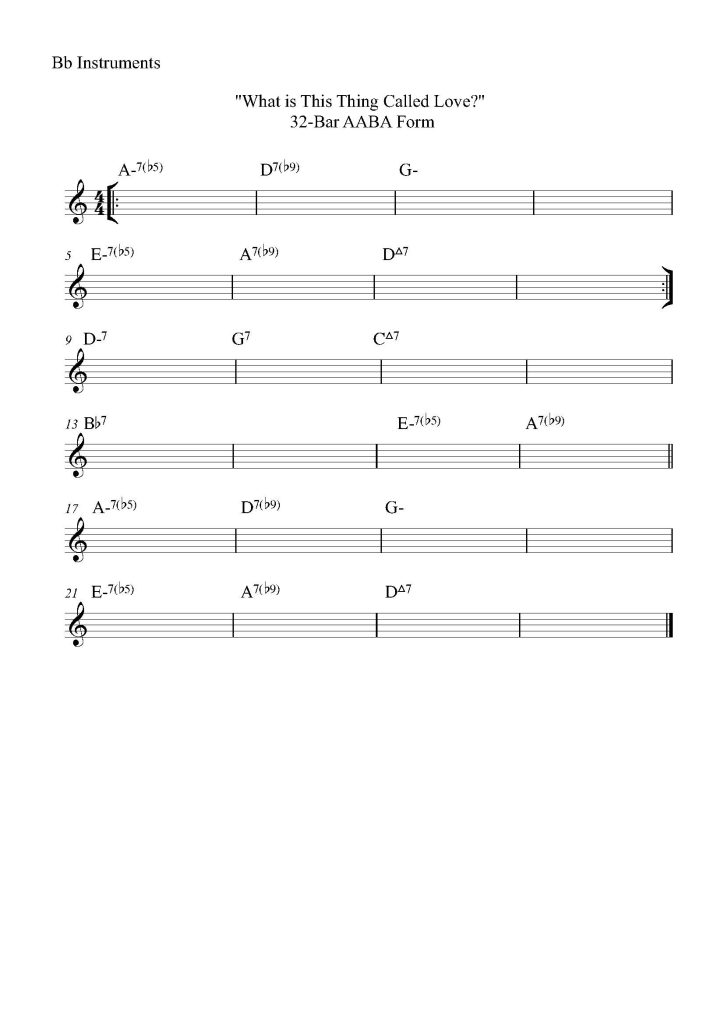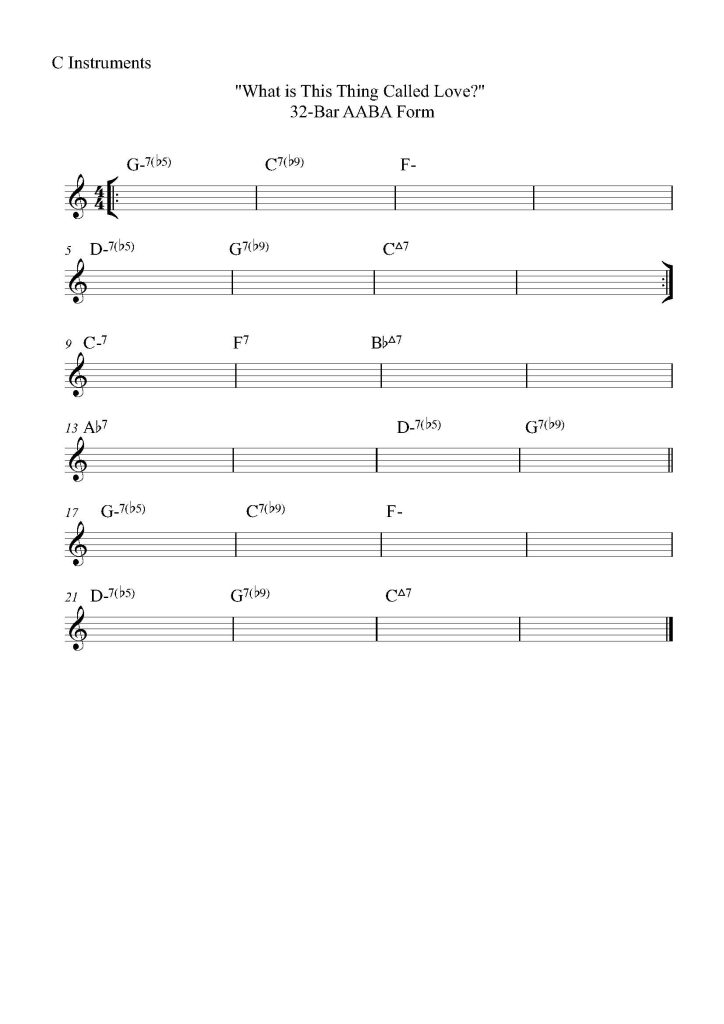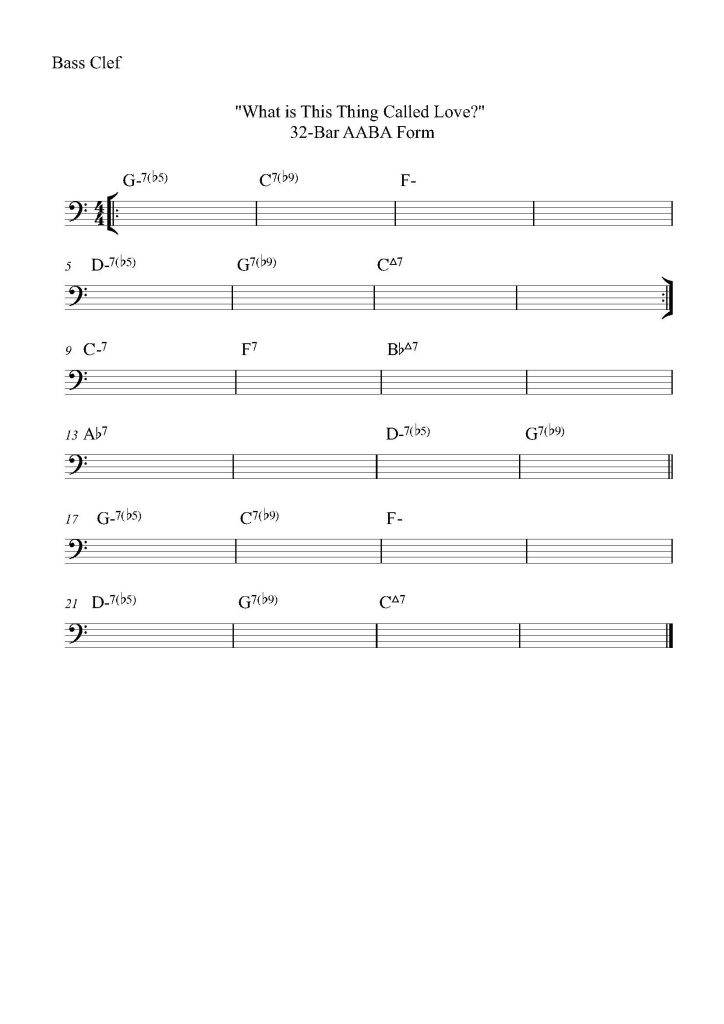Approaches to “What is This Thing Called Love?”
The 32-bar “Song Form” – 8-bars, repeated, followed by an 8-bar bridge, to an 8-bar repetition very similar to the first 8-bars (so-called AABA form) – has been a popular jazz structure for almost as long as the 12-bar blues. Taken from popular songs of the early-to-mid 20th Century, the AABA 32-bar form is common in jazz and Broadway musicals alike. To improvise over a 32-bar form requires a different set of principles as compared to 12-bar structures. While both forms have connections to the specific kinds of melodies typical of their forms, looking deeper at the harmonic progressions allow for more varieties of improvisational approaches.
Each module contains:
- A set of concepts and approaches
- Suggested ways to practice and apply new ideas
- Creative ways to broaden the application of concepts
- Goals and projects to demonstrate developing vocabulary and concepts
What Is This Thing Called Love Chord Progressions

WITTCL – Chord Progression – Bb Instruments

WITTCL – Chord Progression – C Instruments

WITTCL – Chord Progression – Eb Instruments

WITTCL – Chord Progression – Bass Clef
Refer to the following Spotify Playlist – What is This Thing Called Love? for many examples.
Remember, listening is just as important as practicing.
*Try playing through the chords according to the steps below by yourself (a cappella) with a metronome. Once you are comfortable playing through the form in time, then try it with the What is This Thing Called Love? play-a-long track.
Refer to the playing examples of every variation below.
Bass Only
Drums Only
Bass and Drums
Piano and Drums
Full Rhythm
- Play triads: 1,3,5 in time through the progression
- Walk a bass line with triads connecting the root by 1/2 step below
- Walk a bass line with triads connecting the root by 1/2 step above
- Walk a bass line with triads connecting the root by 1/2 step below or above
- Play triads in other inversions: 5,1,3 etc… (try a few combinations)
- Improvise with triads only
- Improvise with triads and connect by half step to 1,3 or 5
- Play 7th chords: 1,3,5,7
- Play 7th chord inversions: Your choice – there are 24 combinations
- Guide tones: Map out the 3rd’s and 7’s (Just like you did with the blues)
- Incorporate the scales into improvisation. Remember, the chord tones are still your best note choices. Try filling in the chord tones with some of the scale notes.
- Improvise using the harmonic generalization scales (keys above brackets)

